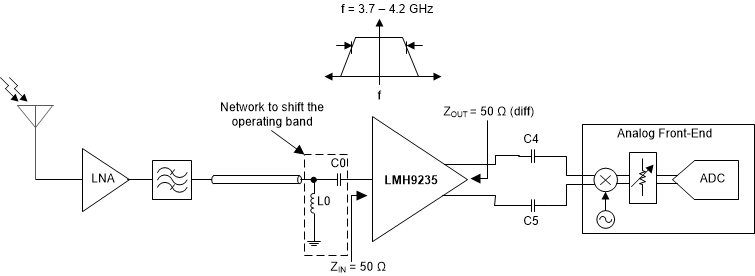ZHCSLB8C May 2020 – May 2021 LMH9235
PRODUCTION DATA
8.2.2 Shifting the Operating Band
It is possible to tune the frequency band of operation of this chip by a simple external network at the input as shown in Figure 8-1. In this example, with the help of 2 components at the input, the frequency band is shifted to 3.7 - 4.2 GHz.
 Figure 8-5 Shifting the Operating Band
Figure 8-5 Shifting the Operating Band